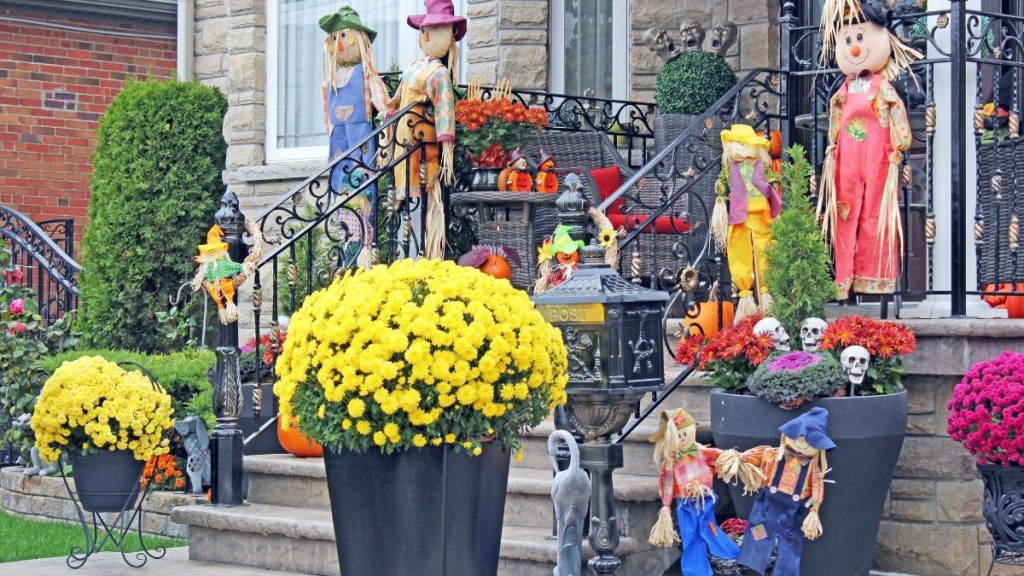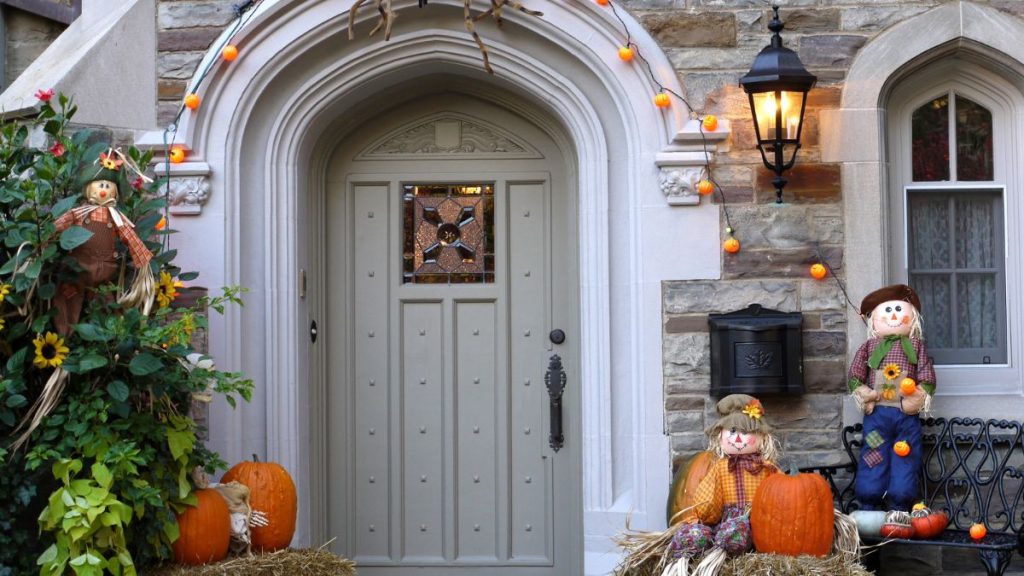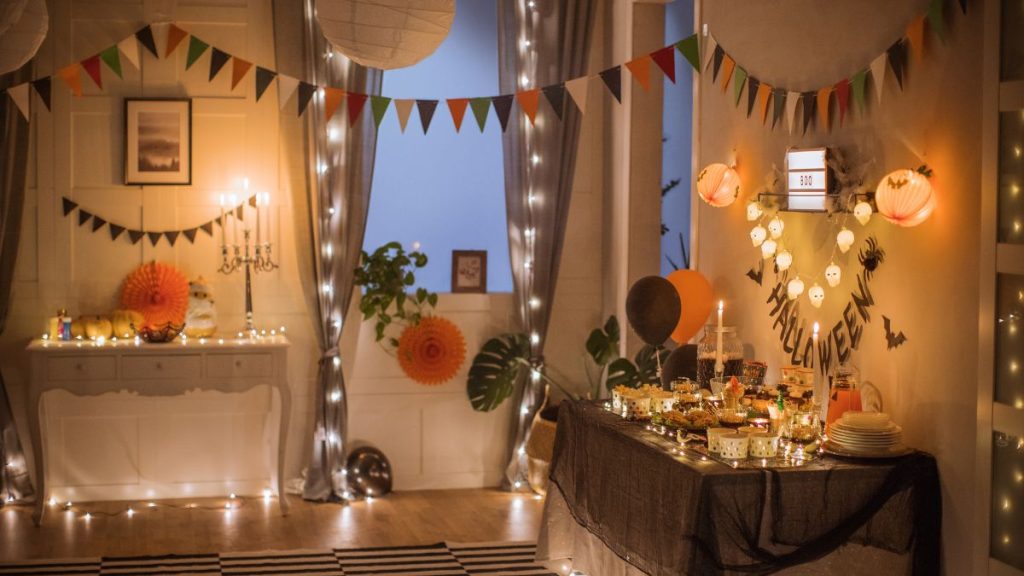October Home Sellers: The Impact of Halloween Decorations on Buyers
It’s officially October, and everywhere you look, pumpkins, wreaths, and string lights are popping up. If you’re trying to sell your home this month, you might be wondering: should I jump on the festive bandwagon or keep things neutral? I’ve seen it both ways, and honestly, it can make a difference—sometimes subtle touches help your home shine, and other times, going overboard can actually turn buyers away.
The real estate market has been shifting lately. In some regions, like the South and West, buyers have more options than they did before the pandemic. In the Midwest and Northeast, inventory is still tighter, so standing out is even more important.
That’s where your Halloween decorations come in. Done thoughtfully, they can make a home feel warm, inviting, and alive. Done poorly, they can distract buyers or even make them skeptical about what’s hidden behind those fake cobwebs.
So in this guide, I’ll walk you through when decorating for Halloween can boost your home’s appeal, when it might hurt, and exactly how to make that call. By the end, you’ll know how to create a cozy, seasonal vibe without letting the decorations steal the spotlight from your home’s best features.
Why Halloween Decor Catches a Buyer’s Eye?

When I talk to buyers, one thing is clear: we notice first impressions instantly. A home that feels cozy, inviting, and cared-for can stick in someone’s mind—and subtle Halloween touches can amplify that feeling. According to Realtor, light seasonal decor like pumpkins, wreaths, or fall leaves can actually help a home sell by making it feel warm and welcoming.
Think about it this way: buyers aren’t just looking at walls and floors—they’re imagining their lives there. A tastefully decorated porch or a string of soft lights can make them picture themselves sipping hot cocoa on a crisp October evening. In family-oriented neighborhoods, subtle decor can signal a lively, community-focused street, which can be a huge plus for buyers with children.
But here’s the thing—you want to enhance the home, not turn it into a haunted spectacle. The key is using decorations as a gentle nudge, a visual cue that says, “this is a home you could love in the fall,” without distracting from the actual layout, flow, or architecture.
Practical takeaway: Stick to natural, neutral fall elements and soft lighting to create warmth, without overwhelming the property’s features.
Positive Impacts: How Light Decor Can Help Your Sale
I’ve seen it firsthand: the right touches can make a house pop in listing photos and open houses. Adding pumpkins, mums, or a tasteful fall wreath can instantly boost curb appeal. Buyers notice attention to detail—it shows the home is cared for.
Seasonal decor can also make your online photos stand out. A well-lit porch with warm accents can transform a typical MLS listing into something visually memorable. And in neighborhoods where Halloween is celebrated, subtle decorations can signal that the community is vibrant and family-friendly, which matters to many buyers.
Even in cooler regions like New England or the Midwest, I recommend a few string lights or autumnal accents—they create a cozy, inviting mood that resonates emotionally. The goal isn’t to scream “Halloween!” but to gently tie the home to the season in a welcoming way.
Avoiding common decor mistakes ensures your seasonal touches enhance your home rather than detract from it—here’s a detailed guide on 8 Halloween Decor Mistakes That Instantly Ruin Your Home’s Look.
Practical takeaway: Use decor that enhances mood and warmth; focus on entryways, porches, and small accent areas rather than the entire yard.
Negative Impacts: How Decor Can Backfire

I can’t stress this enough: too much decor can hurt more than it helps. Over-the-top props, gore, animatronics, or excessively spooky themes can overwhelm buyers and shift attention away from the home’s best features. I’ve seen cases where decorations made a house feel more like a haunted attraction than a place to live.
Some buyers might even wonder if the decorations are hiding flaws—like peeling paint or cracked walls. Others may simply be turned off by anything polarizing or gimmicky. And remember, safety matters: cords, trip hazards, and fire risks can all leave a negative impression.
Location also plays a role. In warmer climates, heavy fall decor may feel out of place, while in areas with strong Halloween traditions, ignoring the season can feel odd. Understanding your market is key to avoiding these pitfalls.
Practical takeaway: Keep decorations moderate, safe, and neutral; avoid anything that distracts from the home’s features or could alienate buyers.
For quick tips and alerts on seasonal home safety and decor ideas, you can join our WhatsApp updates — it’s a simple way to stay informed while planning your decorations.
Regional Considerations: Location Matters
Where you live affects how buyers perceive seasonal staging. In places like New England or Salem, Massachusetts, Halloween is almost a cultural event—homes that skip the decor can feel out of sync. A few pumpkins or a tasteful wreath can feel like the right touch for the season.
Meanwhile, in warmer climates such as California or Florida, buyers might not expect fall-themed decor at all. Here, minimal accents or creative adaptations—like a skeleton with a surfboard—can nod to the season without feeling forced.
Neighborhood context matters too. If the street is lively with seasonal displays, your home will feel disconnected without some level of decor. Conversely, if neighbors don’t decorate, even subtle touches can feel out of place.
Some of the risks of over-the-top decor, like obstructed pathways or safety hazards, can be avoided by following practical safety tips, like the ones shared in 6 Simple Ways to Keep Your Home Safe While Going All Out for Halloween.
Practical takeaway: Match your decor to local culture and neighborhood trends; subtlety is safer than extremes unless you’re in a high-Halloween-celebration area.
Do’s and Don’ts of Halloween Home Decorations
I always recommend a “less is more” approach. Here’s a concise checklist from what I’ve seen work best:
Do:
- Use neutral fall colors like creams, rusts, and deep yellows.
- Add natural elements: pumpkins, gourds, corn stalks.
- Include soft, warm lighting for a cozy ambiance.
- Keep decorations out of listing photos to keep them timeless.
Don’t:
- Use spooky sound effects or overly gory props.
- Inflate massive yard displays that dominate the view.
- Put decor over key features, which can distract buyers.
- Go heavy on themed props that might alienate some audiences.
The goal is to enhance your home’s appeal without making buyers feel like they’re entering a seasonal spectacle. When done right, decorations can subtly elevate your property and make your listing photos more inviting.
While decorating, it’s also important to avoid mistakes that could compromise security—like leaving valuables in view or overexposing entryways, as highlighted in 5 Halloween Decor Mistakes That Could Invite Burglars Into Your Home.
Practical takeaway: Follow this simple do’s and don’ts checklist to strike the right balance between festive and functional.
Making the Call: Should You Decorate?

So how do you decide? I usually recommend asking yourself a few key questions: Who is your likely buyer? What’s the neighborhood vibe? Does your property’s architecture lend itself to seasonal accents?
If you’re in a family-oriented, festive neighborhood, light decoration can signal community engagement. If your market is more neutral or you’re selling in a hot climate where fall decor isn’t common, you may want to focus on timeless, subtle touches—or even skip Halloween decorations entirely.
It’s about balance. Your goal is to complement your home’s features, not overshadow them. When you keep that in mind, you can make a confident call without worrying that a few pumpkins or string lights will hurt your sale.
Practical takeaway: Match your decor to your buyers, your property, and your market. Let your home shine first, and let seasonal touches support it.
Optional Marketing & Listing Strategy
If you do decide to decorate, consider using it as part of your marketing strategy. A few tasteful props can make your listing photos stand out online, especially in the crowded October market.
Open houses can also benefit: a cozy, lightly decorated home feels inviting and memorable. Some agents even use social media to highlight subtle seasonal staging—an Instagram photo of a pumpkin-lined walkway can draw extra attention to your listing.
The key here is subtlety. Decorations should enhance your story, not dominate it. Think of them as a visual accent that makes buyers pause, notice, and imagine living there.
Practical takeaway: Use Halloween decor strategically to improve listings and open house appeal, without letting it steal focus from your home.
Summary & Key Takeaways
Here’s what I want you to remember:
- Less is more: subtle decorations like pumpkins, mums, and warm lighting work best.
- Know your market: region, neighborhood, and buyer demographics matter.
- Highlight the home: never let decor distract from key features or flow.
- Avoid extremes: spooky props, gore, animatronics, and oversized inflatables can hurt more than they help.
- Use decor as a tool, not the star: seasonal touches should support the listing, not define it.
Ultimately, Halloween home decorations can be an asset or a liability—it all comes down to thoughtful execution. By keeping it tasteful, safe, and aligned with your buyers’ expectations, you can make your home feel inviting and memorable.
Are you planning to decorate your home this October? I’d love to hear what ideas you’re considering—share your thoughts or questions in the comments, and let’s talk about what really works!
For more tips on keeping your home safe while decorating and ensuring your seasonal staging works in your favor, check out our website Build Like New.
Disclaimer: This article is for informational purposes only and reflects general real estate and seasonal decorating insights. Local regulations, market conditions, and buyer preferences may vary. Always consider professional advice when staging or selling your home.


